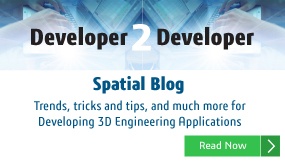3D scanning in BIM (Building Information Modeling) is done using a 3D laser scanning machine.
This machine collects “points” of a building or structure (e.g., its walls, pillars, etc) and builds a large collection of points to make a “point cloud.” The more “points”, the more accurate the 3D scanning results and, in turn, the greater the data-set (you could have petabytes of data).
In BIM, 3D scanning equips architecture, engineering, and construction (AEC) experts to better examine an existing structure before committing to physical construction work.
For example, you could have a partially constructed building. However, before proceeding any further with the construction work, the builder might conduct a 3D scan of various parts to see how closely the real-world results match with the intended design.
Thus, 3D scanning improves the AEC industry’s quality-assurance (QA) work. By catching problems early and fixing them when it’s feasible, builders can deliver construction projects on-time and within budget. In this respect, 3D scanning is a key asset in BIM.
How to Bring Point Cloud Data from 3D Scans to BIM
Scanning is only one part of the process. The point cloud must also be implemented into the intended workflow and actually support the construction process.
Returning to the point made earlier about using 3D scans for QA in partially-built buildings; AEC experts need software to manage that point cloud data. For example in QA, they need software that references the point-cloud data against the intended design to ensure everything (e.g., the pillars, beams, etc) are where they need to be.
The information provided to the QA engineer must be correct; otherwise, it could derail timelines and result in cost overruns for the project. In other words, software that uses accurate and fully maintained 3D modeling data (provided by tools such as 3D InterOp) have an advantage.
Besides QA, ISVs (independent software vendors) can also provide solutions that make as-built documentation work easier. For example, AEC experts could 3D scan existing structures that do not have documentation (e.g., historical sites) and use the point cloud data as a starting point to collecting information about it, such as the height, density, and materials of the walls.
In some cases, you could have the possibility of designs not having accurate information about its real-world counterpart. This is a major hurdle for re-construction or renovation projects. As a result, AEC experts could use 3D scanning to get accurate as-is information
3D Scanning for BIM is a Major Opportunity for ISVs
In all of the scenarios discussed above, it’s clear that ISVs have a major opportunity in the AEC market when it comes to 3D scanning and managing point-cloud data.
In fact, not every AEC company can necessarily afford to deploy industry-leading BIM software (e.g., from Autodesk and Bentley) to every single engineer or architect.
But ISVs can step-in with applications with all of the functionalities necessary for managing 3D point cloud data and other BIM requirements, such as clash detection, tessellation, and others.
In other words, you could support point-cloud-based QA and as-is documentation work.
With tools that allow you to read and write in different formats, you can also equip AEC experts to use the data they get from 3D scanning as part of their overall project. For example, while in QA, they can bring that 3D scan data to their existing BIM workflow and, in turn, compare that (imported in one format) to documentation in other formats (from suppliers or other partners).
You can insert your applications as important assets in the BIM process.
Next Steps: Accelerate Development with the Right Tools
Be it the different BIM software vendors and formats involved (e.g., Autodesk, Bentley, IFC, etc) or the need to meet the high-quality standards AEC companies expect, it’s difficult and costly for ISVs to develop BIM applications alone.
This is especially true as the AEC industry adopts new methods, such as 3D laser scanning and point clouds, into their workflow for QA, documentation work and other scenarios. ISVs that rely on solely their own capacities to keep-up will always remain behind.
This is where it’s critical to rely on software development kits (SDK) that are proven to work and are continuously maintained by experts who fully understand CAD, CAE and Modeler and other areas important to BIM.
You can get SDKs that will equip your applications to support 3D laser scanning data today, freeing you to focus on improving the user experience. The SDK provider will keep your data libraries up-to-date, which will make supporting your application easier and most cost-effective.
Through its BIM and 3D InterOp SDKs, Spatial brings 30 years of software development and CAD, CAE and Modeler integration experience to the table. We help ISVs develop a diverse range of solutions for every market segment in need of BIM capabilities by providing the 3D modeling and high-quality visualization capabilities your customers expect. Let’s start today!

